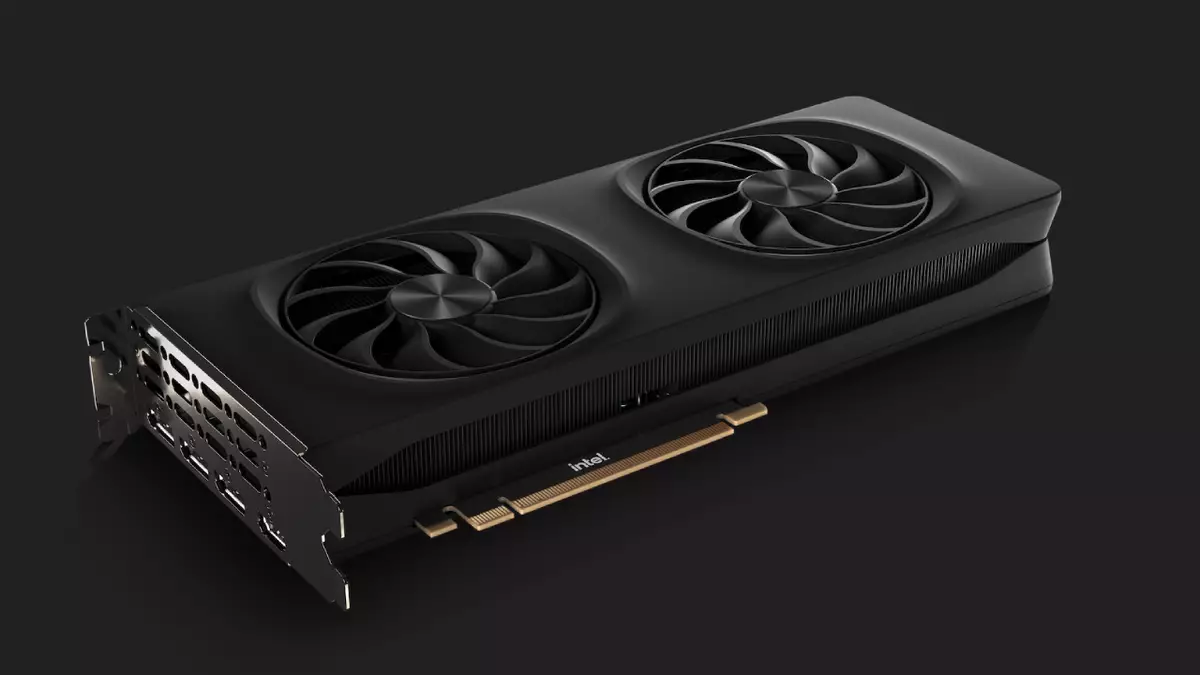Intel has made a significant move in the gaming graphics arena with the launch of its second-generation GPUs, dubbed Battlemage. This new line kicks off with the Arc B580 and B570 graphics cards, aiming to carve out a niche in the competitive landscape dominated by Nvidia and AMD. However, the initial targeting of Nvidia’s low-end RTX 4060 leaves some consumers contemplating whether Intel’s offerings truly meet the demands of gamers seeking robust performance.
A palpable sense of disappointment lingers around Intel’s decision to focus primarily on entry-level competition rather than showcasing a flagship model equipped to challenge higher-end GPUs. Nevertheless, the Battlemage series is touted to not only hold its ground but potentially outshine AMD products in several technical aspects, particularly when it comes to the features it offers. The presence of advanced upscaling capabilities sets the stage for a potent comparison against existing solutions in the market.
Intel’s commitment to innovation is decidedly evident with the introduction of XeSS 2, its latest upscaling technology. This enhancement brings a noteworthy addition: frame generation functionality, which positions it as a contender against Nvidia’s acclaimed DLSS (Deep Learning Super Sampling). Intel asserts that the architectural advancements embedded within its new GPUs resonate with those found in Nvidia’s offerings, most notably through the incorporation of XMX cores. These AI accelerators closely resemble Nvidia’s Tensor cores, allowing for a more sophisticated handling of AI-driven upscaling.
At the heart of the Battlemage’s allure is its Frame Generation feature. By leveraging previous frame data—such as motion vectors and depth information—Intel’s system can produce intermediate frames. This technique bears similarities to Nvidia’s DLSS framework, presenting the possibility of smoother, uninterrupted gaming experiences. Early benchmarks reveal Intel’s ambitious claims regarding performance uplift, particularly in demanding scenarios like F1 24 at 1440p resolution. An impressive projection indicates that performance could leap from a modest 48 fps to a staggering 186 fps, reflecting a staggering 3.9x boost.
However, the stakes are high. The graphics community is naturally skeptical about performance claims that appear almost too good to be true. While such enhancements offer intriguing prospects, they must also deliver tangible results under real-world gameplay conditions, where consistency in frame rates and visual fidelity is critical. Intel’s assertion of maintaining quality during intensive gaming experiences embodies the delicate balance between performance and visual clarity which gamers require.
In addition to improved performance capabilities, Intel is bringing to the table a new feature dubbed XeLL, which stands for Low Latency. This feature directly addresses a common concern among gamers—latency. By reducing input lag from 57 ms to an impressive 32 ms when operating at nearly 50 fps, XeLL appears to align the Battlemage series with current industry standards set forth by Nvidia’s Reflex technology. Such advancements are essential for competitive gaming, where every millisecond can impact gameplay outcomes.
Furthermore, XeLL claims to mitigate latency typically introduced by the Frame Generation technology. Intel’s aim is clear: to offer gamers a seamless experience where the advantages of upscaling and frame generation coexist without compromise. The approach suggests a holistic vision of gaming where latency, visual fidelity, and sustained performance converge.
As it stands, the Battlemage series positions itself as a formidable player in the graphics card landscape, particularly against the backdrop of AMD’s current offerings, which lack a comparable AI architecture. The synergy between XeSS 2 and its various features suggests a promising framework, yet it is critical for Intel to back its ambitious claims with empirical success in the competitive arena.
While the Battlemage GPUs hold significant promise with their innovative technologies and performance capabilities, the true test will come when users can put them through their paces. As gamers eagerly await real-world testing and reviews, the future of Intel’s foray into the GPU market remains a captivating narrative of competition and technological evolution.

